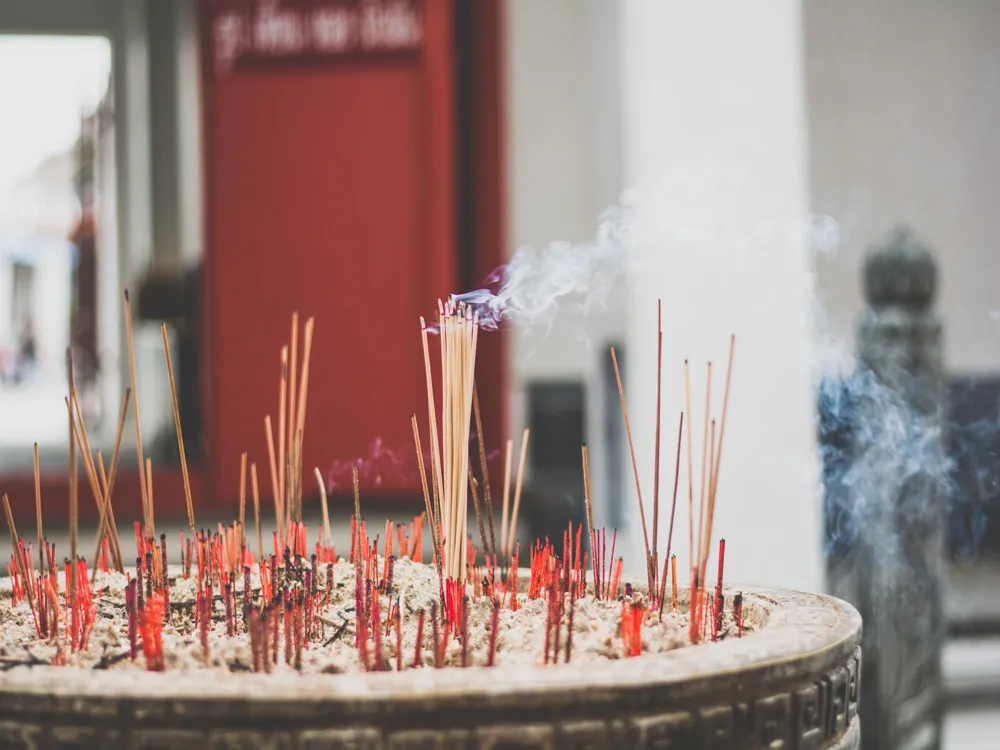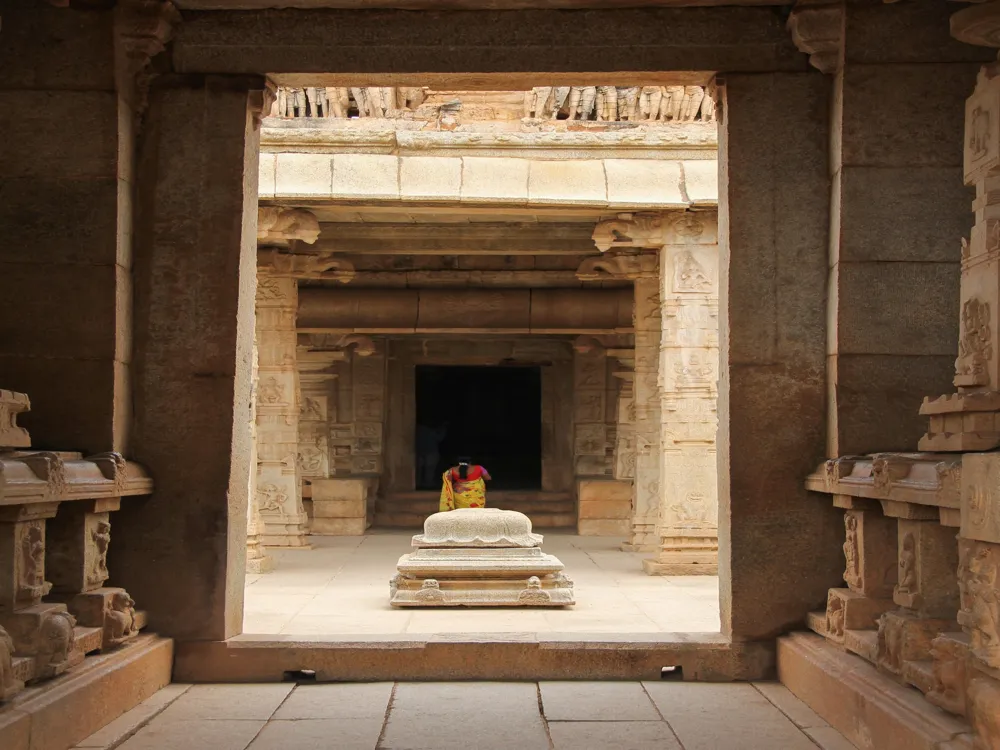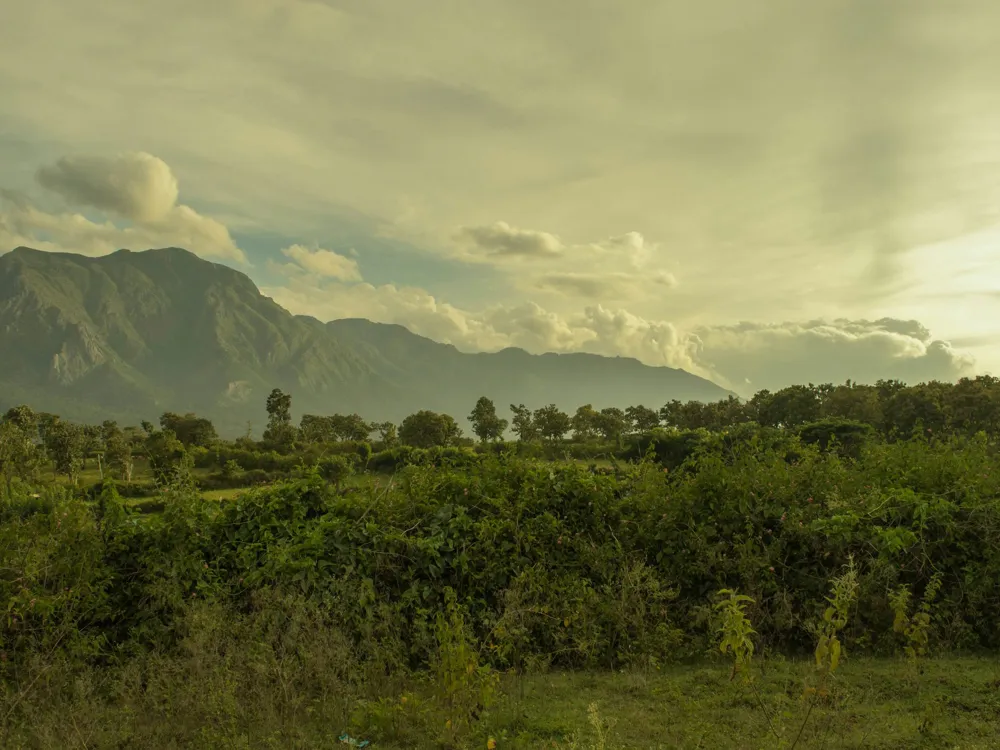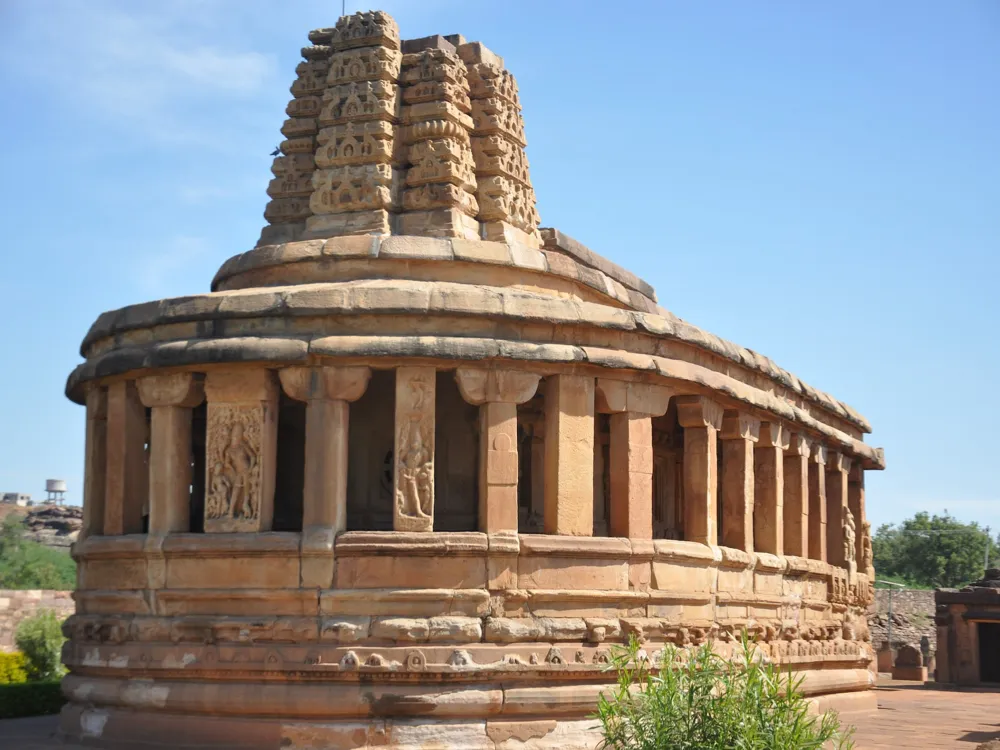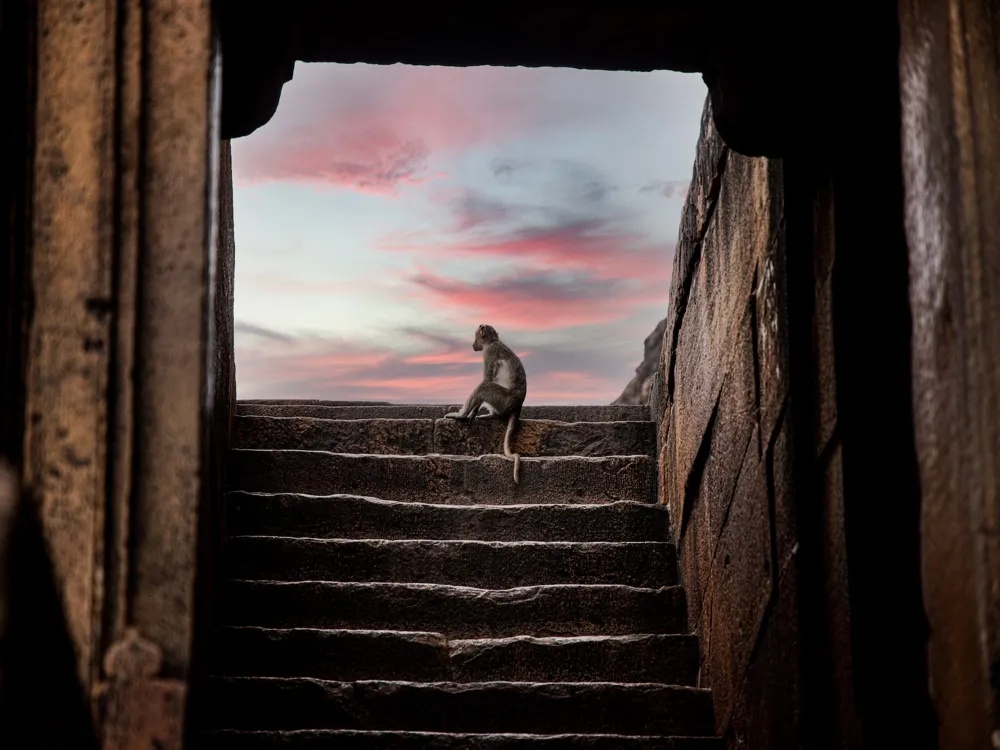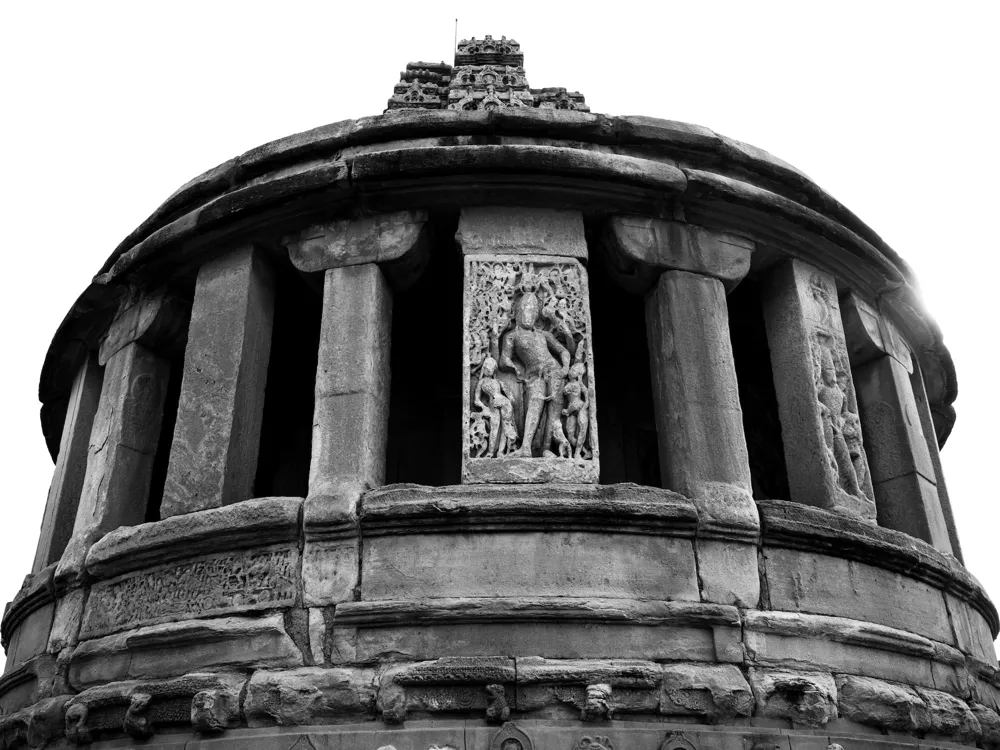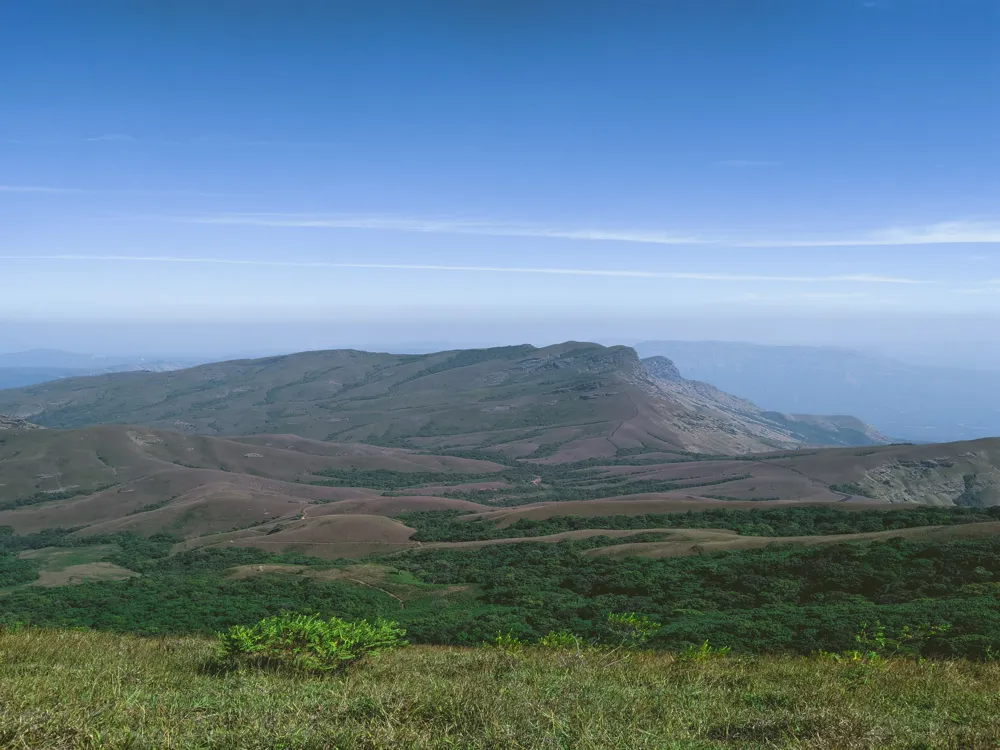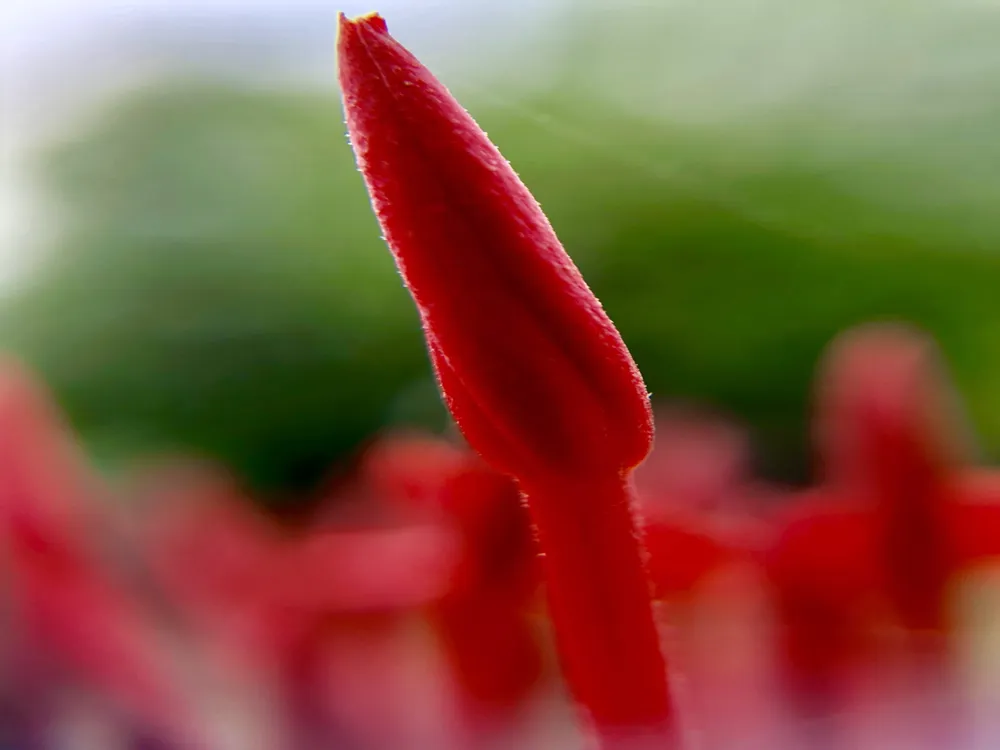Nestled in the heart of the ancient city of Hampi in Karnataka, India, the Lotus Palace stands as a testament to the architectural grandeur of the Vijayanagara Empire. This exquisite edifice, also known as Kamal Mahal or Chitrangini Mahal, is renowned for its unique blend of Hindu and Islamic styles, a hallmark of the Vijayanagara period. The Lotus Palace, believed to have been constructed in the 16th century, is part of the Zenana Enclosure, a secluded area reserved for royal women.
The name 'Lotus Palace' is derived from its striking resemblance to a lotus bud. The structure is a splendid example of Indo-Islamic architecture, characterized by its symmetrical design and the harmonious integration of domes and arches. The palace is a two-storied structure made primarily of brick and mortar, showcasing the ingenuity of the craftsmen of the era. Its central dome, shaped like a half-open lotus bud, is surrounded by several smaller domes, each intricately designed.
The walls of the Lotus Palace are adorned with a plethora of ornamental arches and fine carvings that depict scenes from Hindu mythology, as well as geometric and floral patterns, exemplifying the fusion of different cultural influences. This magnificent structure not only exemplifies the architectural brilliance of its time but also offers a window into the lifestyle and artistic preferences of the royal inhabitants of the Vijayanagara Empire.
The architecture of the Lotus Palace in Hampi is a splendid amalgamation of Indian and Islamic styles, a characteristic feature of the Vijayanagara era. This harmonious blend is evident in the structure's layout, design elements, and construction techniques. The palace's most striking feature is its central dome, designed in the shape of a lotus bud, which is why it is aptly named the Lotus Palace.
The base of the palace is made of stone, while the superstructure is constructed using brick and mortar, a technique that was revolutionary at the time. The stone base provided a sturdy foundation, while the lighter brick and mortar allowed for the creation of more intricate designs and overhanging structures. The walls and columns of the palace are covered with elaborate carvings and motifs, depicting both Hindu mythology and Islamic geometric patterns, showcasing a cultural synthesis.
The layout of the Lotus Palace is symmetrical, with a central hall surrounded by smaller chambers, each serving a specific purpose. The hall is supported by intricately carved pillars, each unique in its design, demonstrating the artisans' attention to detail and craftsmanship. The use of arches in doorways and windows, a characteristic Islamic architectural feature, adds to the palace's aesthetic appeal. The palace's ventilation system, which includes lattice windows and strategically placed openings, reflects the ingenuity of ancient Indian architecture in creating a comfortable environment in a hot and dry climate.
The ideal time to visit the Lotus Palace is from October to February, when the weather in Hampi is pleasant and conducive to exploring the outdoor attractions. Opt for a guided tour to gain deeper insights into the history and architecture of the Lotus Palace. Knowledgeable guides provide fascinating anecdotes and historical context. Respect the cultural significance of the site. Dress modestly and avoid loud conversations. Photography might be restricted in certain areas, so it's advisable to check with the authorities beforehand. The climate can be hot, especially during mid-day. Carry water bottles to stay hydrated and wear sun protection like hats and sunscreen. Visiting during local festivals can be a unique experience, as Hampi comes alive with cultural events and traditional performances. However, expect larger crowds during these times.
Hampi is accessible by various modes of transportation, making it convenient for tourists to visit the Lotus Palace. The nearest airport is in Bellary, about 60 kilometers away. From there, you can hire a taxi or take a bus to Hampi. If you prefer to travel by train, the nearest railway station is Hospet, approximately 13 kilometers from Hampi. Regular bus services and taxis connect Hospet to Hampi. For those who enjoy road trips, Hampi is well-connected by road to major cities like Bangalore, Hyderabad, and Goa.
Overview of Lotus Palace, Hampi
Architecture of Lotus Palace
Tips When Visiting Lotus Palace
Best Time to Visit
Guided Tours
Cultural Etiquette
Stay Hydrated
Check for Festivals
How To Reach Lotus Palace
Lotus Palace
Hampi
Karnataka
NaN onwards
View hampi Packages
Weather :
Label : Must Visit
Tags : Forts & Palaces
Timings : Open on Weekdays from 8:00 am to 6:00 pm
Entry Fee : INR 10 for Indians
INR 250 for foreign nationals
Entry is free for children under 15 years
Planning a Trip? Ask Your Question
Hampi Travel Packages
View All Packages For Hampi
Top Hotel Collections for Hampi

Private Pool

Luxury Hotels

5-Star Hotels

Pet Friendly
Top Hotels Near Hampi
Other Top Ranking Places In Hampi
View All Places To Visit In hampi
View hampi Packages
Weather :
Label : Must Visit
Tags : Forts & Palaces
Timings : Open on Weekdays from 8:00 am to 6:00 pm
Entry Fee : INR 10 for Indians
INR 250 for foreign nationals
Entry is free for children under 15 years
Planning a Trip? Ask Your Question
Hampi Travel Packages
View All Packages For Hampi
Top Hotel Collections for Hampi

Private Pool

Luxury Hotels

5-Star Hotels

Pet Friendly






